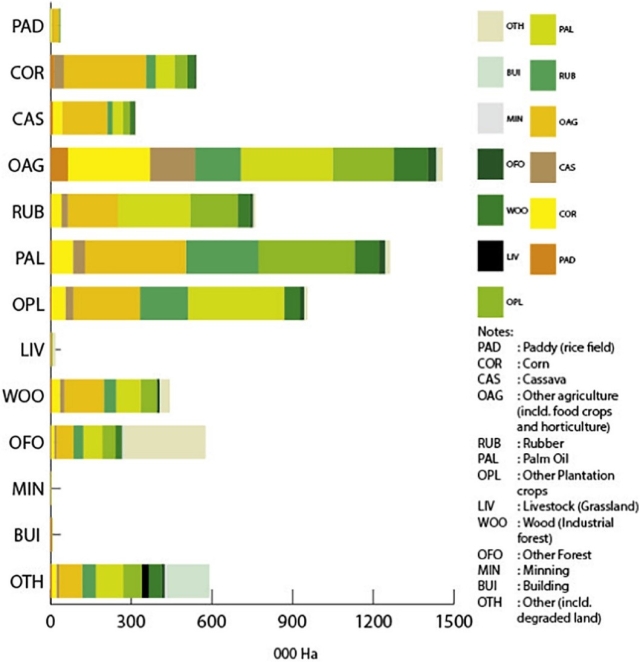論文情報
著者:Marissa Malahayati, Toshihiko Masui
年:2019
掲載誌:Forest Policy and Economics, 109 (2019)
論文へのリンク(英文のみ)
キーワード
LUCF, Computable general equilibrium (CGE), Reforestation, Intensification, Mitigation, Forest management
概要
Indonesia's economy relies heavily on the land-based sector, which results in high deforestation and forest degradation that leads to large emissions from Land Use Change and Forestry (LUCF). Under its Nationally Determined Contributions, Indonesia has committed to achieving emission reductions of 29% by 2030 as compared to the business-as-usual (BAU) scenario. However, as the largest share comes from LUCF, mitigation efforts in this sector will reduce its production. This study assesses the potential impact of the implementation of the mitigation efforts in the LUCF sector on the economy and environment through the use of a computable general equilibrium model. Two main approaches were introduced to reduce emissions: 1) increasing the crop yield (intensification), which is expected to motivate farmers to use less land and thus, lead to a decrease in deforestation; and 2) encouraging land conservation. Our simulation indicated that intensification alone results in less GDP loss but does not significantly reduce deforestation and emissions from LUCF as farmers will still cultivate the land as usual, and land expansion for commercial plantations, especially palm oil, will continue. Therefore, introducing conservation practices, though costly, may help to protect forest areas and reduce emissions from LUCF. Thus, the simultaneous implementation of intensification and conservation efforts is recommended. To this end, cooperation between the central and regional governments is necessary along with an incentive scheme that encourages farmers to adopt mitigation efforts on their lands.





